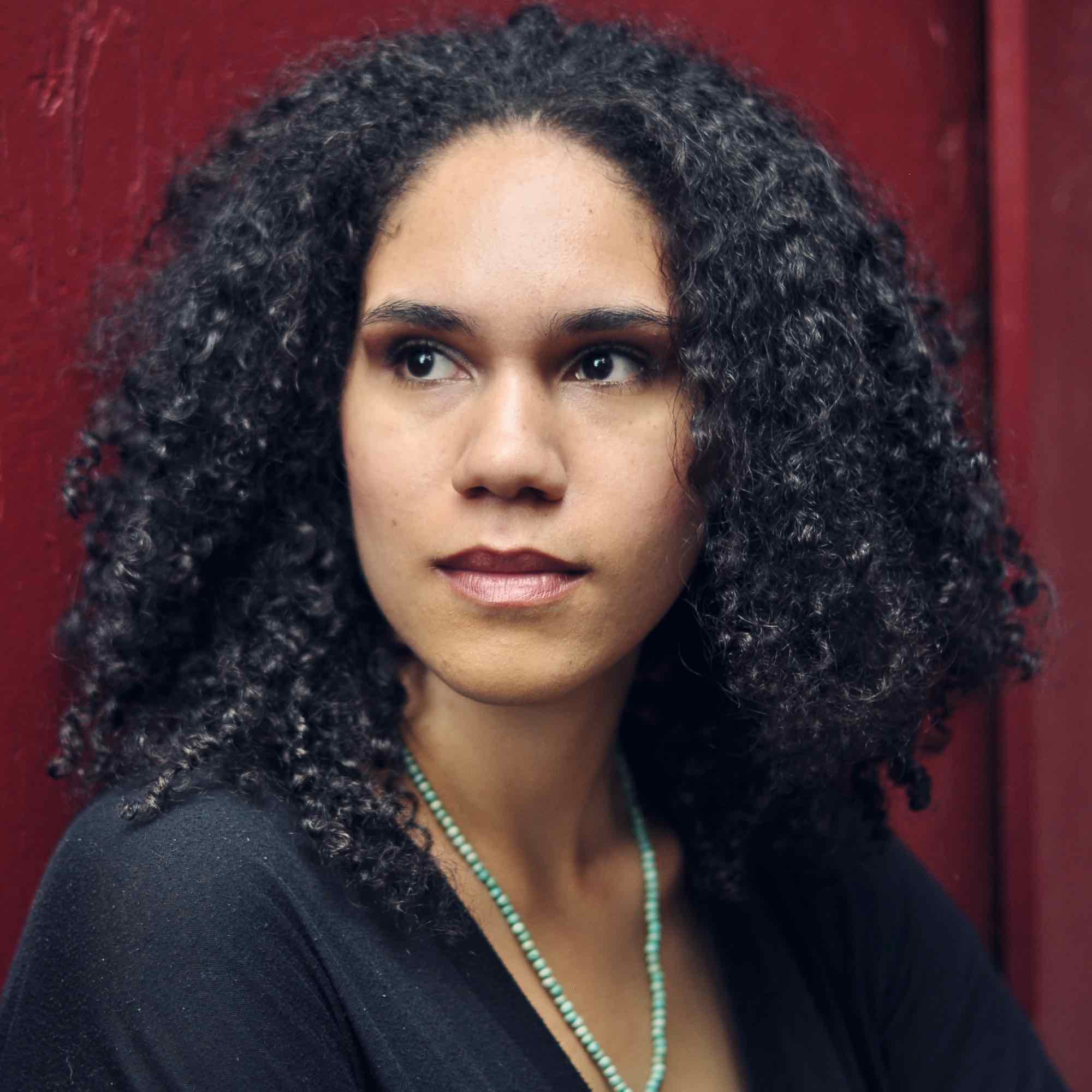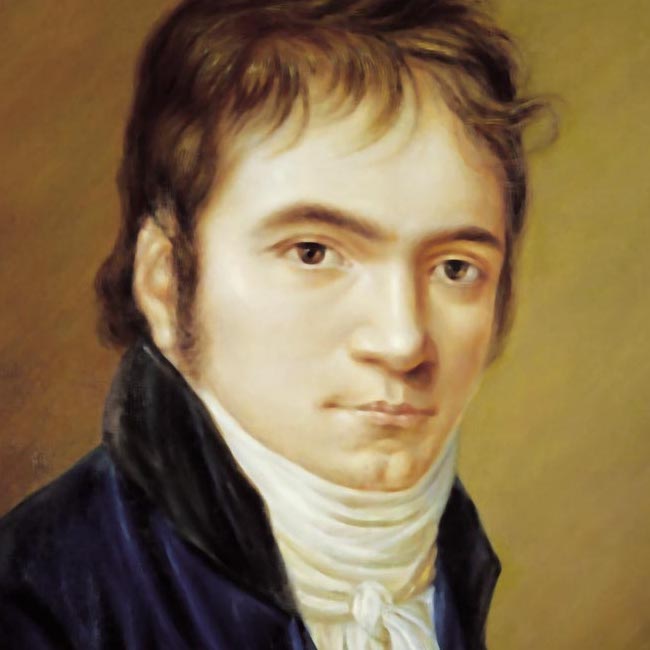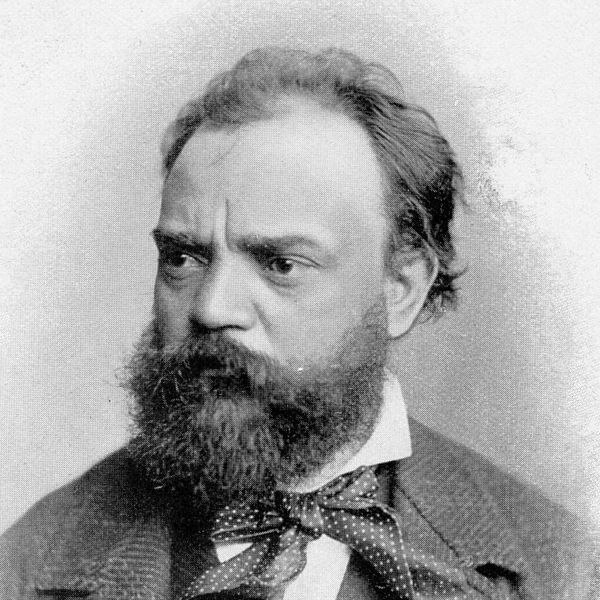Madison
Symphony Orchestra Program Notes
February
17-18-19, 2023
J.
Michael Allsen
This program
opens with our first performance of music by the
prominent young American composer Jesse Montgomery,
her wonderfully eclectic Coincident Dances.
Another Madison Symphony Orchestra first at this
program is the Overture Hall debut of the dynamic
young pianist Benjamin Grosvenor, playing Beethoven’s
third piano concerto. Our final piece is the fine Symphony No. 6 of
Dvořák, one of the works that secured his
international reputation as a composer.
 One
of America’s finest young composers, Jessie Montgomery
is a native New Yorker, and brings the multicultural
musical heritage of her hometown to many of her works.
One
of America’s finest young composers, Jessie Montgomery
is a native New Yorker, and brings the multicultural
musical heritage of her hometown to many of her works.
Jessie
Montgomery
Born: December
8, 1981, New York City.
Coincident
Dances
-
Composed: 2017.
-
Premiere: This work was commissioned by the Chicago Sinfonietta, and premiered by that group, conducted by Mei-Ann Chen, on September 16, 2017.
-
Previous MSO Performances: This is our first performance of the work.
-
Duration: 12:00.
Background
Montgomery is also prominent as a
violinist and as an educator and advocate for broader
representation of Black and Latinx musicians in
classical music.
Composer and violinist Jessie
Montgomery grew up on Manhattan’s Lower East Side, and
credits the neighborhood’s unique artistic atmosphere
and the musical, artistic, and activist activities of
her own family for fostering a career that “merges
composing, performance, education, and advocacy.” After
her musical studies at the Third Street Music School
Settlement, the Juilliard School and Princeton
University, Montgomery remains active both as a
performer and composer. As a violinist, she has
performed with the PUBLIQuartet, the Providence Quartet,
the Catalyst Quartet, the Silkroad Ensemble, the Sphinx
Virtuosi, and her own ensemble. Since she was a
teenager, Montgomery has been involved with the Sphinx
Organization, devoted to fostering diversity in
classical music performance, and which specifically
promotes the development of young African American and
Latinx string players. She has gained an equally
impressive number of credits as a composer, with
commissions for the Orpheus Chamber Orchestra, the
Albany Symphony Orchestra, the Metropolitan Museum of
Art, and many others.
Coincident
Dances is a driving, sometimes chaotic piece
inspired by the mix of musical styles you might be
hearing at the same time during a walk through
Montgomery’s neighborhood.
Montgomery frequently channels an
eclectic range of styles in her music, and this is
certainly the case with her 2017 Coincident Dances.
She provides the following note on the piece:
“Coincident
Dances is inspired by the
sounds found in New York’s various cultures, capturing
the frenetic energy and multicultural aural palette one
hears even in a short walk through a New York City
neighborhood. The work is a fusion of several different
sound-worlds: English consort, samba, mbira dance music
from Ghana, swing, and techno. My reason for choosing
these styles sometimes stemmed from an actual experience
of accidentally hearing a pair simultaneously, which
happens most days of the week walking down the streets
of New York, or one time when I heard a parked car
playing Latin jazz while I had rhythm and blues in my
headphones. Some of the pairings are merely experiments.
Working in this mode, the orchestra takes on the role of
a DJ of a multicultural dance track.”
Opening with
an agitated bass solo, the work soon moves into an
insistent jazzy groove, with a walking bass line from
bass clarinet and bassoon. This only the first of many
styles and combinations of styles that that pass by.
Near the middle, motion briefly halts for a dramatic
Spanish-flavored trumpet fanfare and the orchestra moves
into a more aggressive rhythm, with even more abrupt
changes in style, as if quickly changing channels while
surfing the radio dial. There are occasional moments
where much of the multilayered texture disappears to
expose the underlying rhythmic background. The last of
these, a quiet episode for the woodwinds, brings the
piece to a close.
 Beethoven
the composer was an equally accomplished pianist,
writing works that showcased his own powerful technique,
including his five piano concertos.
Beethoven
the composer was an equally accomplished pianist,
writing works that showcased his own powerful technique,
including his five piano concertos.
Ludwig
van Beethoven
Born: December
17, 1770 (baptism date), Bonn, Germany.
Died: March
26, 1827, Vienna, Austria.
Concerto No. 3
in C minor for Piano and Orchestra, Op. 37
-
Composed: Most of this concerto was written in 1799-1800, though Beethoven continued to revise the work through 1802-03.
-
Premiere: April 3, 1803 in Vienna, with Beethoven as soloist.
-
Previous MSO Performances: Previous performances have featured John Browning (1973), Yefim Bronfman (2003), and Olga Kern (2008).
-
Duration: 37:00.
Background
This work was first performed in 1803,
during a concert in Vienna. There was relatively little
rehearsal time for this program, which included over two
and a half hours of music. Beethoven did not have time
to finish copying the piano part for the concerto and
played it from memory, quite likely improvising some of
it on the spot!
When Beethoven moved to Vienna in
1792 his greatest fame was as a pianist—there are
astonished reports of his virtuosity and almost arrogant
mastery of the instrument. Most of his piano works were
of course written for his own performances, and he
logically turned to the concerto as a showcase for his
talents. There was an unfinished concerto in E-flat
composed when he was only 16, but his first complete
concerto was the work we now know as the Piano Concerto No.2,
written in 1794-95. The Concerto No.1
was completed in 1800. Though his third concerto was
more or less finished by the spring of 1800, Beethoven
set it aside before adding the finishing touches. The
impetus for finishing the work seems to have been a
benefit concert staged at the Theater an der Wein on
April 3, 1803. This program, which included his first
symphony, the premieres of his second symphony and the
oratorio Christ
on the Mount of Olives, would not have been
complete without a new solo concerto. Preparation for
this concert—a marathon by today’s standards—was limited
to a single long rehearsal, and Beethoven was actually
obliged to drop a few additional(!) pieces because they
could not be prepared in time. He was actually
completing the oratorio on the morning of the concert,
so an incident recounted by the conductor Ignaz von
Seyfried should come as no surprise. Beethoven conducted
the concerto from the piano, and Seyfried, who was
assigned to turn pages for Beethoven, later remembered:
“I saw almost nothing but empty
leaves; at the most, on one page or another a few
Egyptian hieroglyphs, wholly unintelligible to me were
scribbled down to serve as clues for him; for he
played nearly all of the solo part from memory since,
as was so often the case, he had not had time to set
it all down on paper. He gave me a secret glance
whenever he was at the end of one of the invisible
passages, and my scarcely concealable anxiety not to
miss the decisive moment amused him greatly and he
laughed heartily at the jovial supper which we ate
afterwards.”
It is entirely possible in fact that
Beethoven may have improvised some bits—and almost
certainly the cadenza—during the concert, though he
later wrote a cadenza that has become standard in
performing the concerto.
What You’ll Hear
The concerto is in three movements:
• A lengthy
opening movement that develops two themes laid out by
the orchestra.
• A lovely slow
movement, with relaxed conversations between soloist and
orchestra.
• A closing rondo,
with a main theme alternating with contrasting
music...with some surprising twists along the way.
The opening movement (Allegro con brio)
begins with a lengthy orchestral introduction that lays
out both main ideas: a tragic main idea and more cantabile theme
played by the clarinet. The piano’s first entrance is
with three bold runs that lead into the main theme.
While the movement proceeds in rather conventional
sonata form, with development of the primary theme at
the forefront most of the way, the surprising ending
seems to be a kind of tribute to Mozart’s C minor
concerto (No. 24,
K. 491), one of Beethoven’s favorite works. As in
Mozart’s concerto, he dispenses with the usual Classical
convention, which has the piano part rest after the
closing cadenza to leave the orchestra alone for a brief
coda. Here, the piano remains in control almost until
the final chord.
The Largo begins
with a whispered meditation by the solo piano that is
picked up with hushed intensity by the orchestra.
Orchestra and soloist exchange roles in the central
section, with a lovely duet for bassoon and flute
accompanied by piano arpeggios. The opening music
returns once more, lightly developed, and there is a
short coda with a brief horn solo that closes the
movement.
The final movement (Rondo: Allegro)
also seems to have Mozart in mind. The piano introduces
the main theme, which ties together a series of
contrasting episodes. The central section serves almost
as a development: after a delightful clarinet duet, the
orchestra begins a brief but intense fugue that leads
the piano into a Major-key version of the theme, and
further developments of the main idea in the orchestra.
There is a cadenza, and then Beethoven introduces a
final surprise, a shift to 6/8, and furious C Major
coda.
 Dvořák’s
Symphony No. 6
was the first of his symphonies to be published, and was
important in establishing his international reputation.
Like many of his works, it was deeply influenced by the
music of his Bohemian homeland.
Dvořák’s
Symphony No. 6
was the first of his symphonies to be published, and was
important in establishing his international reputation.
Like many of his works, it was deeply influenced by the
music of his Bohemian homeland.
Antonín
Dvořák
Born:
September 8, 1841, Nelahozeves,
Czech Republic.
Died: May 1,
1904, Prague, Czech
Republic.
Symphony
No. 6 in D Major, Op. 60
-
Composed: August-October of 1880.
-
Premiere: March 25, 1881, in Prague, with the Prague Philharmonic under Adolf Čech.
-
Previous MSO Performance: 2013.
-
Duration: 41:00.
Background
Composed in 1880 for the Vienna
Philharmonic, this work’s planned Vienna premiere seems
to have fallen victim to Austrian musical nationalism.
Nevertheless, it quickly became an international
favorite.
By 1879, Dvořák was a household name
in his native Bohemia, but was only just beginning to
make a mark in the Imperial capital, Vienna, and
beyond...despite the goodwill and help of his friend
Johannes Brahms. Brahms had been on the panel that
awarded Dvořák a prestigious Imperial composition award,
the Stipendium, in 1875. He also introduced Dvořák to
most of Vienna’s musical notables, including his
publisher Simrock, who would later publish much of
Dvořák’s music as well. In November 1879, Dvořák and
Brahms attended the Vienna premiere of Dvořák’s Slavonic Rhapsody
No.3 by the Vienna Philharmonic. Afterwards, the
conductor, Hans Richter, congratulated the composer
warmly, even hosting a banquet in his honor with the few
Czech members of the orchestra. Richter invited him to
write a symphony for the 1880-81 season. Dvořák complied
in fairly short order, composing the new symphony in
well under two months in the fall of 1880, dedicating
the score to Richter. But soon after he received the
score, Richter began making excuses for putting off the
premiere, citing overwork and a whole series of
illnesses and deaths in his family. In fact, Richter
seems to have been covering for the real culprit:
Viennese musical politics. The Austrian majority of the
Philharmonic’s players felt that they had already played
enough music by this obscure foreigner, and put up
stubborn resistance to playing the symphony. Dvořák,
suspecting that anti-Czech sentiment might be at the
root of Richter’s foot-dragging, arranged for the
premiere to take place safely back at home in Prague.
(The Vienna Philharmonic did not actually play the
symphony until 1942!)
The Symphony No.6
was the first of Dvořák’s symphonies to be published and
the first to be performed widely outside of Bohemia. It
was published by Simrock as the Symphony No.1,
and known as such for many years. (In the 1950s, the
numbering of Dvořák’s nine symphonies was revised to
include his early symphonies and the actual order of
composition.) It was performed several times across
Europe and, within a few years, in America. It was
particularly popular in England. Richter finally
conducted the work in London in 1882, and Dvořák himself
was wildly received when he conducted the Symphony No.6
there in 1884—he was named an honorary member of the
London Philharmonic Society, and given a commission for
what would become his Symphony No.7 (1885).
What You’ll Hear
The symphony is in four movements:
• A broad opening
movement based upon three distinct themes.
• A relaxed and
beautiful slow movement.
• A lively scherzo
based upon a vigorous Bohemian folk dance.
• A finale that
develops two themes, leading to an exciting ending.
The Symphony No.6
is clearly a piece cast in the mold of Austrian
symphonies, and has several similarities to Brahms’s
second symphony of 1877, but Dvořák also retains much of
the Bohemian character of his earlier works. This is
clear from the very opening of the first movement (Allegro non tanto),
where strings set up an insistent, offbeat dance rhythm
as the woodwinds play fragments of what will become the
main theme. This main idea is finally laid out by the
full orchestra after a short transition. Dvořák lays out
two more ideas in quick succession: a lyrical line
introduced the cellos and horns, and more pastoral idea
from the solo oboe. The development section begins with
lovely passage for high strings, and only works its way
into a storm at the end. After a recapitulation of the
main ideas, the movement ends in robust, brassy coda.
The serene Adagio is based
almost entirely upon a long melody laid out by the
violins, with gentle comments from the solo woodwinds
and horn. This is freely developed throughout, with one
tense outburst near the center of the movement which
only briefly disturbs the placid mood. In the end, the
music seems to be working towards a grand conclusion,
only to have most of the orchestra drop away and leave
solo woodwinds alone for a gentle, pastoral ending. The
main theme of the third movement (Scherzo: Presto)
is based upon the furiant, a rough-edged and decidedly
macho Czech dance that alternates duple and triple
rhythms. Solo woodwinds and strings carry a more
pastoral trio section before the furiant brusquely
returns.
Like the opening movement, the finale
(Allegro con
spirito) takes a while to build up steam, with
agitated strings leading to the flowing main theme. A
second theme, danced by the solo clarinet, is later a
focus of the development, where it is developed in fugal
style. The long coda begins with a sudden acceleration
and an outburst from the brass before the movement ends
with a blistering passage from the strings and a
stirring conclusion.
________